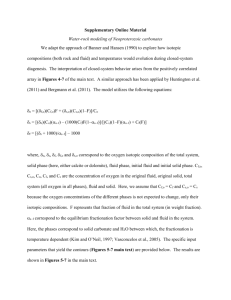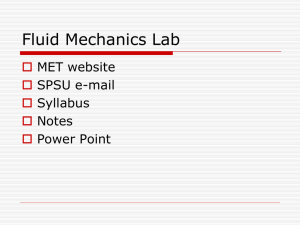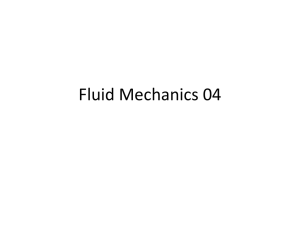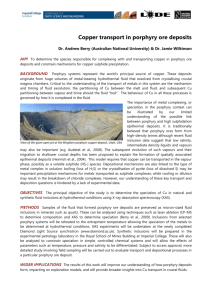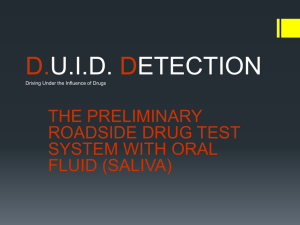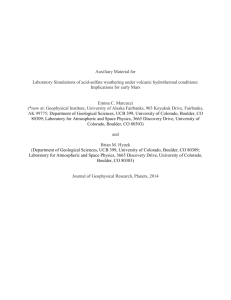Standard_Reaction_paths
advertisement
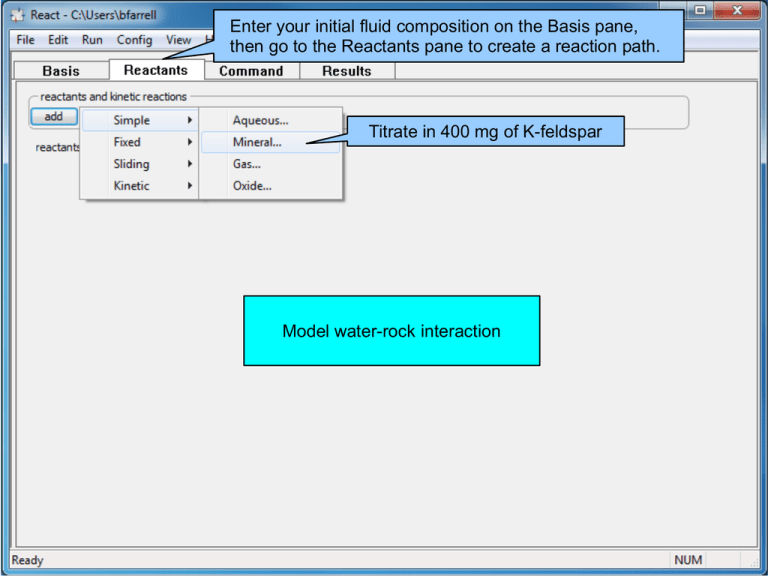
Enter your initial fluid composition on the Basis pane, then go to the Reactants pane to create a reaction path. Titrate in 400 mg of K-feldspar Model water-rock interaction K-feldspar, initially undersaturated, is added to the fluid and dissolves. New minerals form until K-feldspar reaches equilibrium and begins to accumulate in solution. Define one fluid on the Basis pane, then Run, “Pickup” the results, and use as a Reactant to mix with a new fluid. Simulate fluid mixing Barite does not form extensively in either end member fluid, but mixing causes the mineral to precipitate in substantial quantities. Polythermal reactions Click on the “+” button to set a polythermal run. Choose an initial and final temperature. Alternatively set different temperatures for the initial system and reactants. Albite is more stable here than Microcline at high temperatures, but as the system cools Albite dissolves and Microcline precipitates. Go to the Reactants pane to set up a run in which pH varies from 4 to 12. Fixed and sliding activity or fugacity A sliding pH path shows strength of sorption reactions as a function of pH. Speciation diagram U4+ is present as a free ion and as complexes with OH− and Cl− Use a “sliding pH” path to create a speciation diagram

